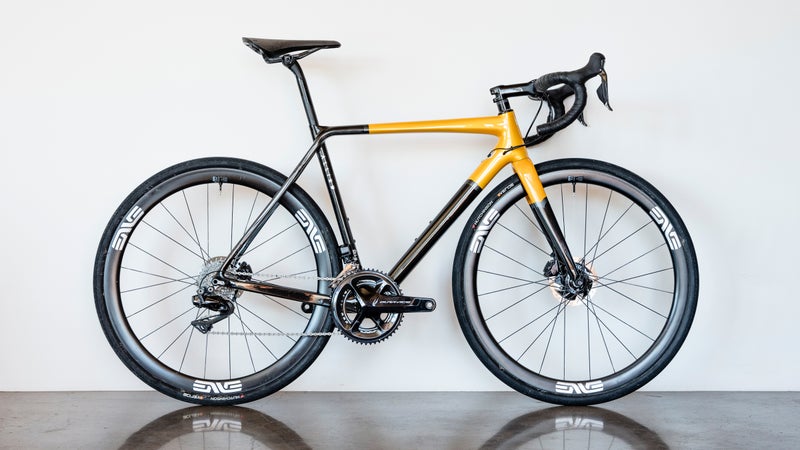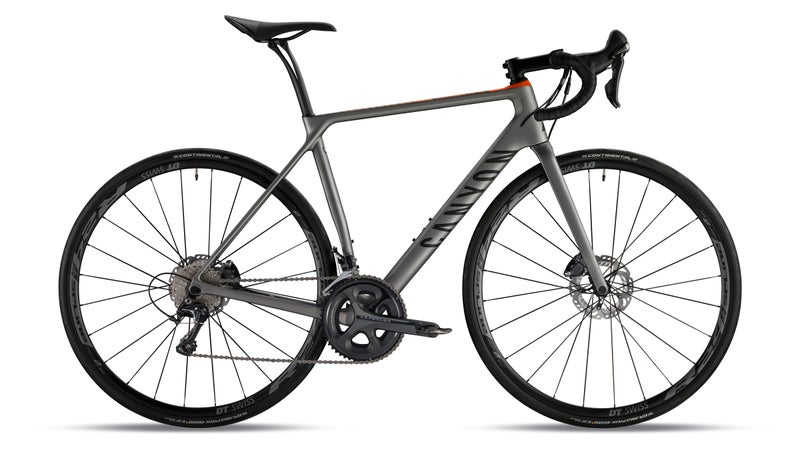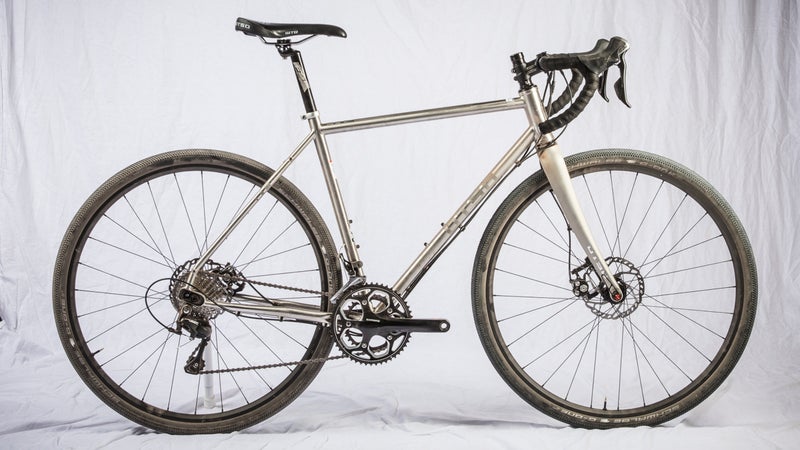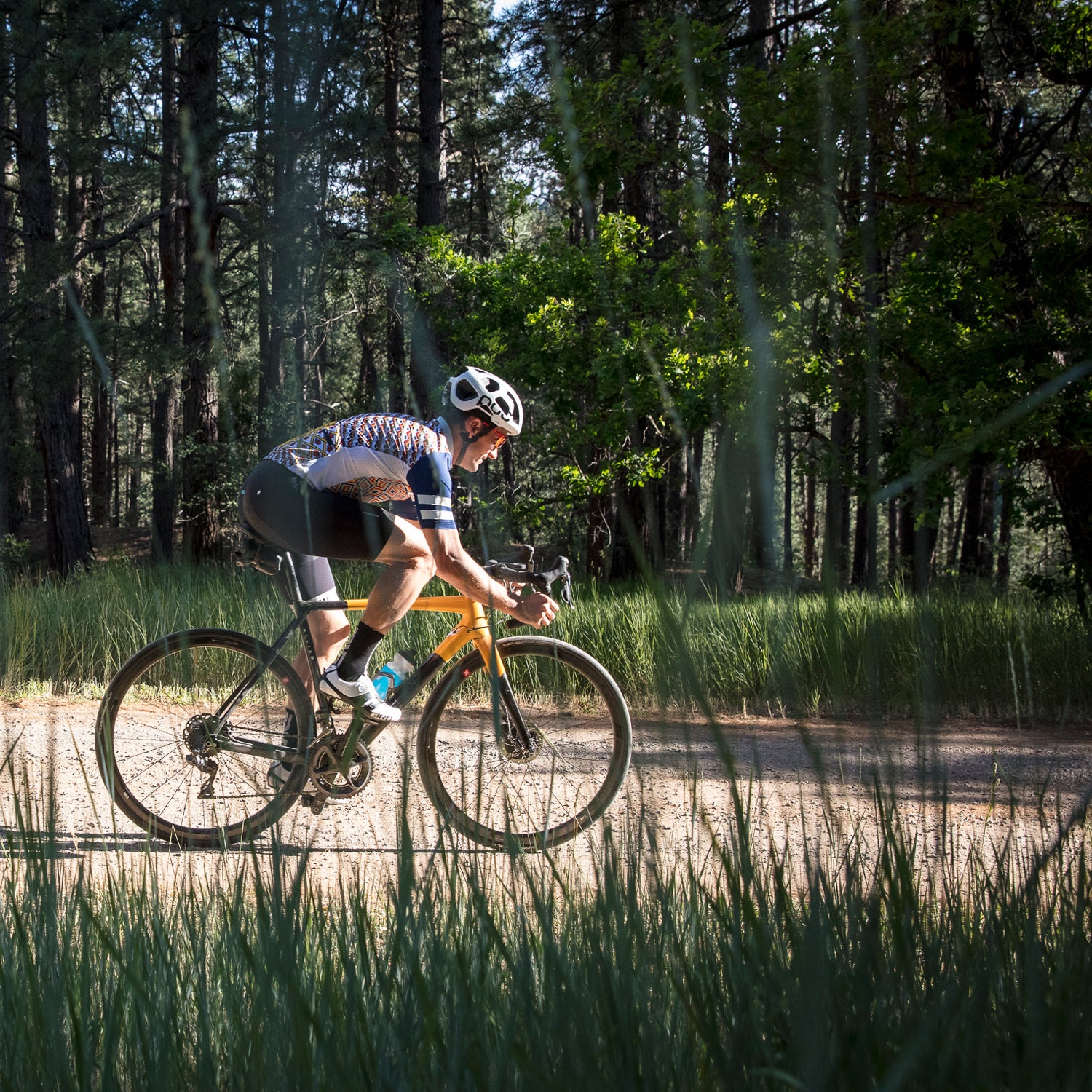Remember the good old days, circa five years ago, when road bikes were for pavement and mountain bikes were for dirt? The advent of the “gravel bike” changed all that. Today, road bikes have evolved into a giant, protracted continuum. There’s everything from disc-equipped race machines meant solely for the tarmac to drop-bar plus bikes fit for a wide range of surfaces and conditions. Sometimes it seems like you need three different models just to get by. Even the naming conventions are confusing: gravel, adventure road, all road, mixed-terrain, alternative road, mixed-surface, and groad bikes are all, effectively, the same thing.
But here’s the thing: Even with all this confusion, the gravel trend is a boon for consumers.
The taller, less-stretched geometries of adventure road bikes and the added compliance are better for the average rider. Sure, there will still be the race crowd who want an aggressive position and hard-edge feel. But most of us will find more comfort on these bikes, with angles that take some of the weight off the hands and destress the neck and shoulders and builds that tune out the bumps and vibration.
This new crop of wider-tire roadies is also making pavement bikes more versatile. While drop-bar bikes were previously relegated mostly to pavement, the additional tire clearance on mixed-surface bikes makes it feasible to ride on everything from glassy pavement to singletrack.
Even if you think you know what bike you want going in, a bike in this category will likely transform your riding.
“Gravel bikes have caught on because they are road bikes that you don’t have to baby,” says Eric Porter, a pro freeride mountain biker for Diamondback who has been won over by the company’s , which we still consider one of the best adventure road bikes on the market. “I commute on it, then get sidetracked with gravel climbs out of town, and then maybe a little singletrack. It’s like a challenge where I keep seeing how far I can get over my head, and the bike always handles it. It’s the best kind of fun.”
Admittedly, wading through the ballooning number of models and nomenclature can be daunting. “How do you even classify a gravel bike right now?” says Sam Pickman, director of product and engineering at , which last week launched its first mixed-terrain road bike. “The landscape is changing so fast.”
To help make sense of the trend, I tend to break mixed-surface bikes into three categories: gravel machines for racing and speed, endurance roadies, and full adventurers. There’s still plenty of variability in those breakdowns, but it’s a good starting point. I also like to think about how much time I intend to spend on pavement versus dirt. Those who are after a bike that can take on the occasional rough surface but are unlikely to seek it out need not look at models with clearance for mountain-size rubber. Similarly, if big adventures like the Tour Divide are in your future, you’ll need a fully capable, super-comfy gravel machine.
In case there’s any question, disc brakes are de rigueur on any mixed-terrain bike. Sure, you could get by with rim brakes. But the stopping power, modulation, consistency in every condition, and ease on the hands that discs afford make rim brakes obsolete in this category. You also want thru-axles for security and stiffness. Standards seem to be shaking out to 100x12mm front and 142x12mm rear.
I’ve been riding three new bikes that span the category, all of which are excellent and reviewed below. But before you read on, here’s one last bit of advice: Even if you think you know what bike you want going in, a bike in this category will likely transform your riding. As a died-in-the-wool road racer friend who recently purchased a gravel bike told me, “It’s changing everything. I look at the world differently. I’m getting sucked into a lifetime of new roads.”
Allied Alpha All-Road (From $4,000)

is for the adventurous roadie. Much like the Alpha, the All-Road is race inspired, so it has aggressive angles (73-degree head tube) and a stiff responsive ride, mitigated only by clearance for wide tires. With a single front chainring, the bike accepts up to 41mm tires (tread and rim depending), though if you go with Shimano Di2, where the front derailleur becomes the limiting point, you’re looking at a max of 35mm to 38mm.
Even with a chunky tire setup—the Hutchinson 35mm Override on the Enve SES 3.4 in my case—the bike is ridiculously light, at just 15 pounds 10 ounces in a size 54 (which puts many skinny-tire road bikes to shame). The pedaling and climbing characteristics are incredibly smooth and snappy, thanks to a tight rear end (420mm chainstays) and a nice stiff head tube and bottom bracket. “Most gravel bike’s weight distribution is biased too far up and back,” says All-Road engineer Pickman. “On these bikes, the thing you search for most is front-wheel feel and traction, which is what provides the confidence.”
I was skeptical of the steep angles and big drop to begin with, but on the road, this bike oozes speed and confidence. It’s the bike I am most excited over because it doesn’t seem to compromise on either pavement or dirt. I can race this bike on the road without feeling I gave up anything, but still beat around for hours on rough gravel roads. It is for me, simply, the perfect one-bike road quiver. Not only that, but there are also two head-tube fit options, and Allied paints it to your preference, meaning you get a near-custom bike, built 100 percent in the United States, for less than most stock bikes.
Other models in this realm include the excellent Open U.P. and 3T Exploro, both with a bit more tire clearance but not quite as much road pedigree and feel.
Canyon Endurace CF SL Disc (From $2,000)

This isn’t a gravel bike—it’s a roadie with more comfortable geometry and space for slightly wider tires than the norm. Spec’d with 28mm Continental Grand Prix 4000 tires, the bike easily fits 32mm and can go up to 35mm and beyond depending on tread and rims. The fact that Canyon has built the bike around DT Swiss R24 Spline wheels, which are ready to roll tubeless, further speaks to the bike’s abilities on mixed terrain.
In terms of geometry, the is a proper roadie, with a very tight rear center (415mm), a somewhat steep head angle (72 degrees on our size small, with a top tube length of 541mm), and a weight in line with most high-quality road bikes (17 pounds for this midlevel spec). However, with a taller head tube than the Alpha All-Road and a shorter, higher stack and reach, it’s a bike that’s more comfortable to ride all day. Good vibration damping is built into the frame and the Ergon-designed split-rail seatpost, all of which adds up to a nice, comfy ride. But don’t be fooled: Out on the tarmac, this bike still cranks along like a regular roadie. And though the wider tires mean it can take on the occasional forest road, the Endurace is aimed at riders who predominantly ride pavement.
Tons of good bikes compete with the Canyon, including the Trek Domane Disc, the , the Cannondale Synapse, and the GT Grade, among others.
Otso Warakin (From $3,100)

This stainless-steel bike from newcomer Otso is one of the plushest, most stable gravel bikes money can buy. On paper, it’s extremely close to the Diamondback Haanjo, which continues to be one of our favorite bikes in this category, and that probably explains why we like this bike so much. The steel frame, combined with Otso’s proprietary carbon fork, bludgeons bumps into submission so your body doesn’t take the beating. Meanwhile, the upright posture and longer wheel base make for a bike that feels good all day.
Thanks to a tuning chip in the rear dropouts, the chainstays are adjustable in three increments, from 420 to 440mm, which means you can have a snappier feel for everyday riding and more demanding terrain or a longer, lower fit and handling when you’re loaded. There’s clearance for 2.1-inch tires on 650Bs (or even on 29ers if you opt for the new, taller Lithic fork), though I found the stock 35mm Sammy Slick tires (on standard 700c road wheels) more than capable for most conditions. Likewise, I swapped the tuning chip only once or twice, for touring, as the tight rear end felt good most of the time.
The is also dialed with everything you need for long-distance touring and backcountry adventuring, including braze-ons for three water bottle cages, fenders, racks, and frame bags. It’s also a sensible build, with hardworking Shimano 105 parts, mechanical disc brakes (better for field service), and a tough set of wheels. Otso offers a smart 1×11 drivetrain upgrade, with XT derailleur and 11- to 42-tooth cassette paired to a front chainring ranging from 36t to 44t.
The Warakin can function as a standard roadie (though its 22.4 pounds would need a bit more input to keep up), but it’s really built for riders who spend lots of time on dirt and those with aspirations of long-distance rides and backcountry touring. Other similar bikes include the Haanjo, the Salsa Warbird, and the Specialized Sequoia.


